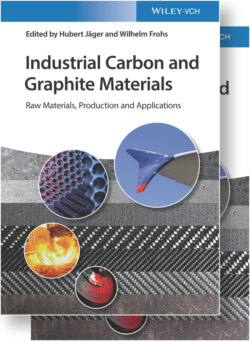Читать книгу Industrial Carbon and Graphite Materials - Группа авторов - Страница 28
3.1 Origin of Elemental Carbon
ОглавлениеThe origin of elemental carbon is connected with the origin of our universe [1]. Carbon was formed firstly after the “big bang” about 13 × 109 years ago. As the prime matter has cooled down to about 600K, the light elements hydrogen and helium were generated. These elements formed by gravitation spiral nebulas with stars, composed mainly of hydrogen. This “star breeding” continues still today, e.g. in the horsehead nebula near the belt stars of the Orion or in the nebula Rho Ophiuchi, the latter with a distance of “only” 400 light years to our solar system, one of the nearest regions of star breeding. Within the bright stars, several exothermic nuclear fusion processes proceed. By these processes, lighter elements are transformed to heavier one, e.g. hydrogen to helium and helium to carbon. Old stars can collapse and explode as “novae.” Then the built‐up heavier elements such as carbon erupt into the interstellar cosmic space. They “soil” the spiral nebulas – from them new stars and solar systems emerge (“cosmic recycling”).
Our galaxy contains about 10 wt% interstellar matter, consisting of an average 86% hydrogen, 10% helium, and 4% “dust.” This “dust” is composed of water ice, silicates, organic compounds (inter alia, polycyclic aromatic hydrocarbons), and elemental carbon forms, e.g. the “football molecule” C50 and higher molecular fullerenes. Hence, carbon is widespread within the universe. The Earth’s crust (including the hydrosphere and atmosphere) contains about 3 × 1016 t carbon, i.e. nearly 0.1 wt%, but mostly chemically bound, and only a small share occurs in elemental forms such as the allotropic modifications graphite and diamond, and some noncrystalline forms, e.g. the fossil shungit, originated presumably about 2 × 109 years ago from marine organism (algae) [2].
